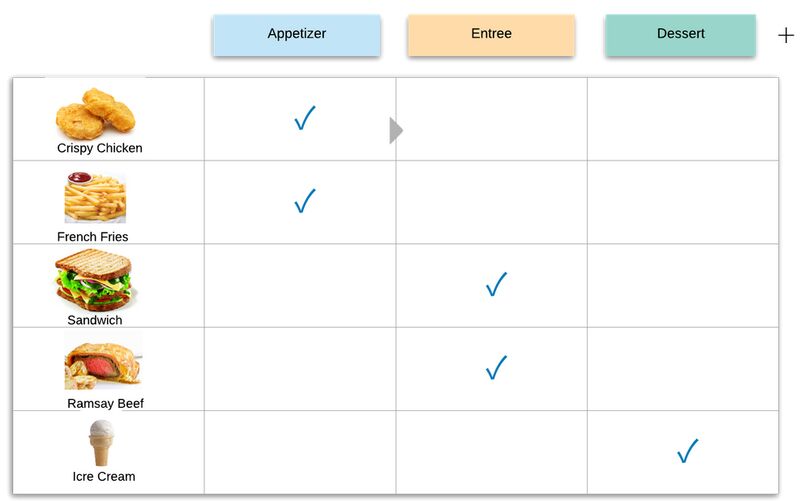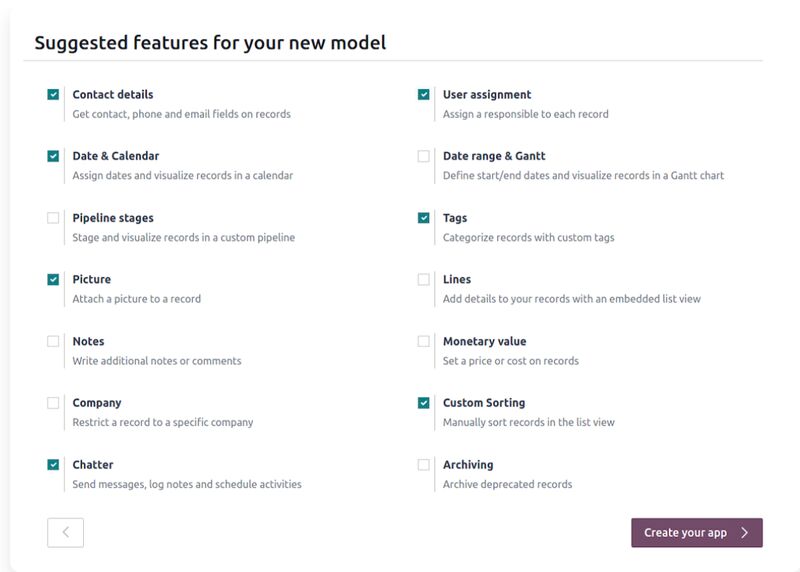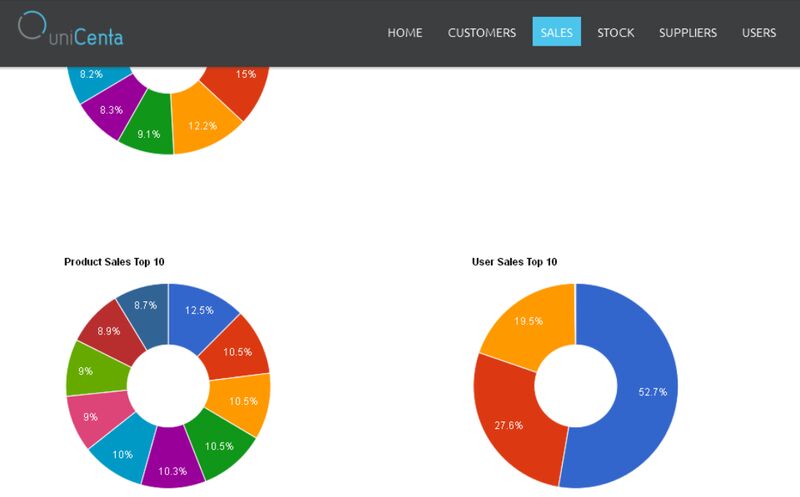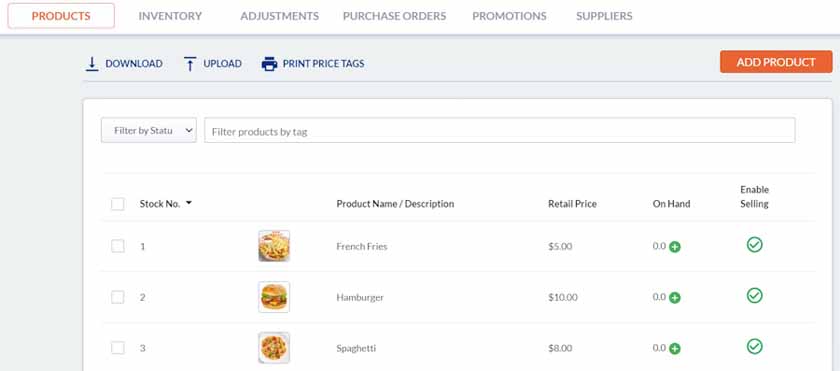Open source point-of-sale (POS) software is adaptable and generally works with any PC or iOS system. Open source systems tend to have free baseline subscriptions, and even the paid plans are typically cheaper than those of commercial POS systems. However, open source software can be more difficult to set up and maintain.
This makes open source POS software best for businesses on a budget that are comfortable customizing and maintaining their own software, or companies that want to develop a customized POS solution.
To find the best open source POS system for small businesses, we evaluated several solutions and narrowed our list down to our top four recommendations:
- ORO POS: Best overall open source POS system
- Odoo: Best for businesses with complex operational needs
- uniCenta: Best for international businesses
- Imonggo: Best simple solution
All of these are cloud-based systems that include tools for cash tracking, high-level employee management, and unlimited users and transactions for all software plans.
Open Source POS Systems Compared
Our Score (Out of 5) | Free Plan Available | Offline Mode | Customer Support | |
|---|---|---|---|---|
 | 4.03 | No | Yes | 24/7 |
 | 3.86 | Yes | Yes | Mon-Fri only |
 | 3.36 | Yes | Yes | Paid plan only |
 | 3.15 | Yes | Yes | 24/7 |
ORO POS: Best Overall Open Source POS System

Pros
- Many checkout and management tools available
- Offline mode
- 24/7 online ticket support
Cons
- Lacks email marketing and custom reports
- Basic inventory management in base POS
- No free plan
Overview
Who should use it:
ORO POS’ feature set is a good fit for many types of small businesses; retail stores, small restaurants, and cafes will appreciate this software’s flexible functionality. Businesses willing to invest in a slightly higher monthly payment will get access to even more tools.
Why we like it:
ORO POS is the paid version of Floreant POS. While no free subscription is available, it is still our top pick—its checkout features are more comprehensive than any other open-source system we evaluated. ORO POS includes tools for discounts, contactless payment options, cash tracking, and gift cards. It also has a strong suite of management features such as CRM, employee management, and payroll reporting.
It is serviceable for different types of businesses such as retail shops, cafes, food trucks, and bars. Features like tipping management, split checks and tabs, and delivery (using plugins) make it suitable for quick-service restaurants or pizza shops.
- ORO POS: From $17.49 per terminal
- Unlimited users
- Built-in kitchen display
- ORO POS Pro: From $26.99 per terminal
- Plugins for inventory, CRM, and floor plan
- Cloud sync backup
- ORO Kitchen Display: From $7.99
- Kitchen Display for the POS system
- Runs on touch screen terminal
- Web-based POS: From $19.99
- Access sales, advanced reports, and employee management from anywhere
- Plugins: $4.99-$9.99

Restaurants using ORO POS can use the software to plan meal courses and the number of dishes per course. (Source: ORO POS)
- Split checks: When paying for a single purchase, customers can opt to use multiple payment types. You can use this feature to divide payments by items purchased, the number of people paying, and more. You can merge tickets and transfer items between tickets, too.
- Tipping management: ORO POS back office tools let you set which employees are authorized to receive tips, accept tips via credit card or cash, and provide tip payouts to specific employees.
- Plugins: ORO POS offers paid plugins for additional functions like QR receipts, floor planning, purchase ordering, multilocation inventory, and a vendor database.
- Customer store credit: With ORO POS, customers can open an account with a merchant and deposit funds, which they can withdraw to pay for any future purchase.
- Receipt designer: The software lets you customize receipts to make things easier for customers or encourage them to buy more. You can suggest tip amounts, such as 10% or 15%, and the corresponding exact dollar value. You can also indicate how many loyalty points the customer has earned with that purchase, plus add a custom message.
Odoo: Best for Complex Businesses

Pros
- Free baseline POS includes invoice and inventory functions
- Inventory tracking across stores, with forecasting module available
- Numerous modules available for stores and restaurants
Cons
- Prices rise considerably when adding modules
- Ecommerce features not included in baseline POS
- Implementation and customization are not intuitive
Overview
Who should use it:
Businesses that have complex operations—manufacturing, warehouses, distribution centers, dropshippers—will appreciate the flexibility and breadth of features that Odoo offers. Odoo also works well for regular retail stores. Note that many specialized tools will require paid add-ons to the baseline POS.
Why we like it:
Odoo is an excellent POS system with a free basic version providing all the features that small retail shops and restaurants need, and a multitude of additional paid programs. These add-ons vary widely in price and can add up fast.
Odoo’s interface is not as modern as those of other providers on our list, but it’s clean and user-friendly. It also doesn’t have the depth of restaurant and inventory features as others, but it made up for it in breadth. However, users will need to pay for and manually add many of the extra features.
- Free: $0
- One app/add-on only
- Unlimited users
- Standard: $9.10 per user (Annual pricing: $7.25)
- All apps/add-ons available
- Custom: $13.60 (Annual pricing: $10.90)
- External API
- Odoo Studio app creator
- Multi-company tools
- Processing fees: None from Odoo. You will need a separate merchant account. Options for integrating payment processing include PayPal, Stripe, and Authorize.net.

Odoo’s Custom subscription gives you access to the Odoo Studio, a tool for creating and customizing your own apps and add-ons. (Source: Odoo)
- Multiple registers with offline mode: Odoo supports multiple registers, is compatible with all touch-screen devices (tablets or mobile devices) and cloud-based with offline mode functionality (for open tickets), and can run multiple checks simultaneously.
- Multilocation inventory tracking: When you update inventory in one location, Odoo performs an immediate update across all stores. You can set up programmable reorder points and automated purchase orders, use it with dropshipping and multiple warehouses, and run inventory reports.
- Extensive customer management & loyalty features: View customer history, employ email marketing, implement rewards and loyalty programs based on points or discounts (identification is done using cards or barcode IDs), and take advantage of after-sales service features. Odoo is listed as one of our best open source CRM software.
uniCenta: Best for International Businesses

Pros
- Available in multiple languages; multilocation functions
- User-based permissions
- CRM, online ordering tools
Cons
- Customer support mostly through forums; email and other forms of support with custom plans only
- Key features (tipping) may need special programming
- Can only work on tablets with the help of a remote desktop protocol (RDP) client
Overview
Who should use it:
uniCenta is a highly adaptable software, good not only for retail and restaurants but also for hospitality and event businesses. It supports multiple languages and currencies and uses international payment processors—making it a great choice for tech-savvy retailers with businesses in different countries or needing several languages.
Why we like it:
uniCenta’s POS software is free to run, copy, distribute, and alter, as it is based on GNU GPL2 licensing. This software remains a popular choice among users, based on many user reviews online and over a million downloads across 150 countries. Its annual fee for customer support is also extremely reasonable compared to other platforms that charge extra for add-on modules. Odoo, for example, is free—but its add-ons can easily stack up and get pricey.
However, with uniCenta, you need to pay for customer support, and a premium membership gives you access to its knowledge base and exclusive access to user forums. We also found no way to program certain features like tipping, and we didn’t see any mention of it in its online resources or demos.
While this software is free, what you’ll actually be paying for is access to customer support.
uniCenta Prices are displayed in pounds on the website; we’ve provided the corresponding USD conversions here.
- Base: Around $77 per year
- Forum access
- 10% plugin discounts
- Plus: Around $175 per year
- API access
- 15% fee rate & plugin discounts

uniCenta shows you a dashboard summarizing your sales data and performance: top products, categories, customers, and more. (Source: uniCenta)
- Multilingual and multicurrency support: uniCenta is available in multiple languages including right-to-left languages; non-English translations are done by the user community. It also supports multiple currencies. You can configure each register based on the region it is in.
- Customizable user interface: Retailers can customize their uniCenta user interface to specific needs and set up things such as tax rates per location, language, units of measurement for unique items and services, and payment methods. You can also create customer accounts that let buyers browse store inventory, reserve items, and make online purchases.
- User-based permissions: Track employee performance, set restriction access levels based on position or role, and monitor employee behavior. Employee user accounts will also display performance and behavior evaluations, employment period, and responsibilities.
Imonggo: Best Simple Solution

Pros
- Simple and user-friendly interface
- Quick and easy POS setup
- Strong offline mode
Cons
- Ecommerce features require premium subscription
- Limited products and users/devices in the free plan
- Limited employee management
Overview
Who should use it:
Imonggo is a straightforward POS system for small shops that need strong inventory tools and a points-based loyalty program. It is inexpensive and can also work with multiple currencies in the same store. This is why it is ideal for small stores, pawnshops, and tourist shops.
Why we like it:
Imonggo’s ease of use stood out the moment I began testing the system. Upon signing up for the software, I was immediately brought to a dashboard with basic inventory, invoicing, reporting, and customer management features all ready to go.
Pop-up messages guided me through the use of each feature, and a more detailed user guide was available within the POS itself. This experience made Imonggo stand out, as many other systems require a more complicated or tedious setup process before you can access the POS dashboard and actually start running your business.
The inability to process credit card payments and other limitations in the free plan, plus the lack of payroll reporting (even on the paid plan), hurt its rating significantly. However, it is easy to use, has an offline mode, and has remarkable inventory features.
- Free: $0
- 1 user and 500 invoices per month
- Inventory and sales management
- Customer support
- Premium: $30
- Unlimited users and invoices per month
- Inventory and sales management
- Priority customer support
- Accept credit cards

Imonggo’s extensive stockroom function lets you create product and inventory lists, as well as manage purchase orders and suppliers.
- Cloud-based with strong offline mode: The POS is web-based and can continue to function in your browser during internet outages. You can also download its POS app for iPad and its sales dashboard app for iPhone and Android devices. An “Imonggo Express Lite” app for iOS can be used to send invoices on the go from your iPhone or iPad.
- Multitender POS: Imonggo handles multiple currencies and tracks the nationalities of customers. However, note that it only runs in English. uniCenta also allows multiple currencies, but only one currency at a time per register. You can also split a purchase between multiple forms of payment and create layaway purchases for high-cost items.
- Multistore sales and inventory tracking: Combine and review consolidated store sales at your main branch and transfer products from one branch to another. You can also set up different pricing schemes for each branch location and maintain individual inventory and sales reports.
How We Evaluated Open Source POS Systems
We looked at several open source POS systems, comparing features that business owners expect from any POS software and considering the advantages of open source platforms—adaptability, community support, and compatibility with different operating systems. We looked for a modern interface, active updates, and depth of features.
Based on our evaluation, ORO POS is the best open source POS software for small businesses, scoring a 4.03 out of 5. It stood out from the competition with its wide array of checkout and management features, plus strong ease of use.
Click through the tabs below to see our full evaluation criteria.
10% of Overall Score
Nearly all open source software is free, but those that ranked well charged a small fee or offered paid add-ons or upgrades. Aside from the free versions, we also considered the maximum number of users, devices, inventory, and transactions a platform can support. Integrated payment processing options were considered as well.
30% of Overall Score
We rated overall features for inventory, customer relations, and employee management (including logins and clock-in/out). We also considered the number and value of reports—whether they were customizable or offered template versions. Bonus points were given to systems that provide email marketing as well.
20% of Overall Score
To be useful for retail and restaurants, we considered tipping management. We also prioritized cash tracking and the ability to reconcile registers at the day’s end. Loyalty programs, gift cards, contactless payments, and online ordering were also features we looked into.
20% of Overall Score
We examined each system’s interface and also looked for user comments and complaints about features and backend issues. Since a point-of-sale system is used round-the-clock in business operations, it is critical that it is intuitive and easy to troubleshoot. We also paid attention to the software’s customer service hours, and whether the program can run offline or is cloud-based.
20% of Overall Score
This score considered a holistic evaluation of features vs. cost, customer support, and popularity in terms of the number of users. We considered online user reviews, including those of our competitors—with the standard of having an average of 4+ rating considered ideal.
Frequently Asked Questions (FAQs)
Click through the sections below to learn more about open source POS systems and their advantages and drawbacks.
POS software gives users the ability to complete point-of-sale and other crucial business functions. With open source POS software, users are also given the right to modify or recode the system as they see fit, without worrying about copyright issues.
Open source POS systems offer flexibility, rapid development, and lower cost than proprietary systems. If you have the ability to work with a developer to customize your POS, going with an open source system can be advantageous.
While most open source POS systems give free licensing and have a free baseline plan, any add-ons, support access, and hardware are usually paid features.
You will need some technical know-how to install and maximize the features of an open source POS system. Maintaining and updating the system—for both functionality and security—will also be your own responsibility.
Bottom Line
Open source POS systems are highly customizable, making them a good choice for small businesses with special needs or the software-savvy owner who likes to customize. Most are free or have minimal charges and are compatible with PC, Mac, Android, or iOS. We found ORO POS the best overall because of its breadth of features, ease of use, and intuitive interface.